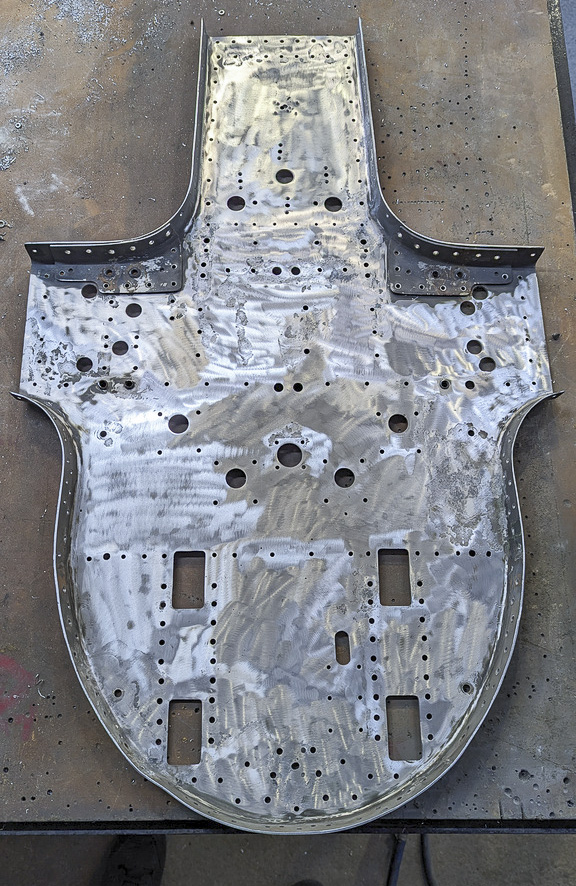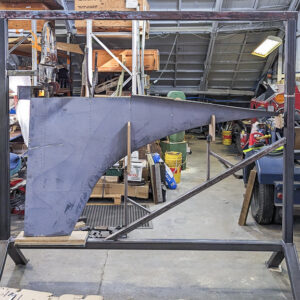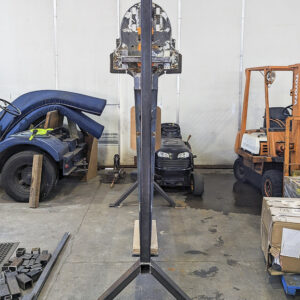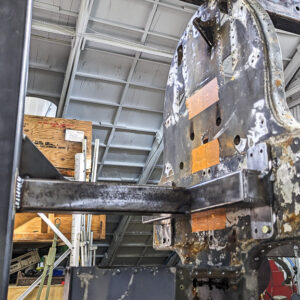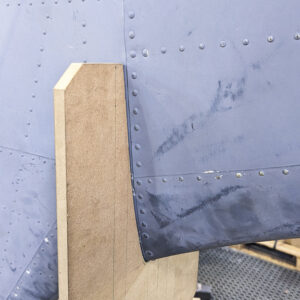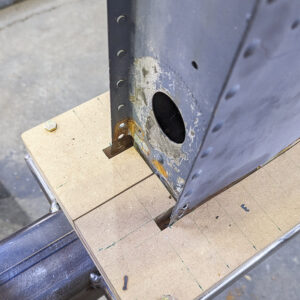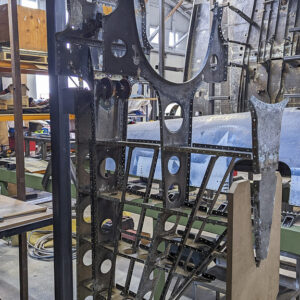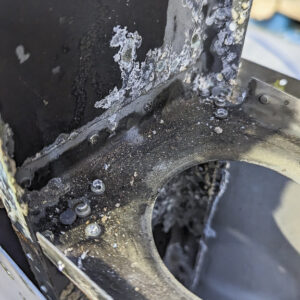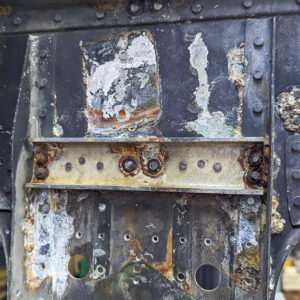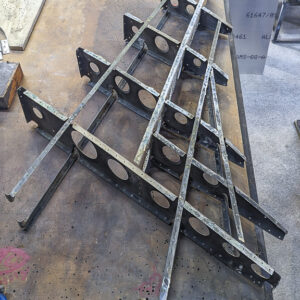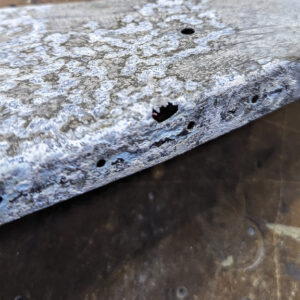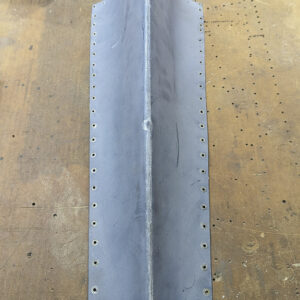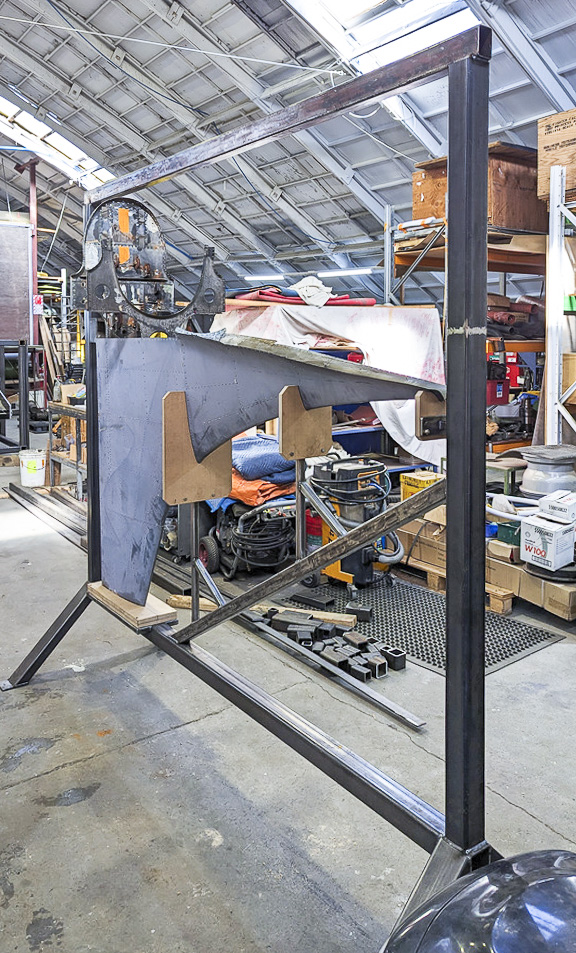
Jigging up the SBD's Tail Fin:
The team at Pioneer Aero Ltd. has constructed a custom-built steel jig to hold the SBD’s tail fin. They designed this fixture to lock key points of the assembly in place to ensure everything remains correctly aligned during the restoration process. The team chose to orient the structure in an inverted position to make the riveting process easier during reassembly.
Another view of the tail fin in its jig prior to restoration commencement. (photo via Pioneer Aero Ltd.)
An aft end view of the SBD's tail fin in its jig. Note that the fixture has two sets of legs, angled down fore and aft; these will help stiffen and stabilize the structure during the riveting process. (photo via Pioneer Aero Ltd.)
A close up view of the tail fin jig showing how it attaches to Frame 17. It uses the same main spar mounting points for the aircraft's horizontal stabilizer. This will ensure everything aligns correctly with the airframe during its reassembly. (photo via Pioneer Aero Ltd.)
A close up of one of the "dinosaur bone' formers used to hold the leading edge. This former will also hold the underlying rib in position prior to fitment of the skins during reassembly. (photo via Pioneer Aero Ltd.)
Fin Disassembly and Assessment:
With the fin firmly positioned within its jig, Pioneer Aero began the restoration process. The first order of business involved removing the skins to allow an initial assessment of the underlying structure. This revealed a level of internal corrosion more extensive than the assembly's exterior appearance had first suggested.
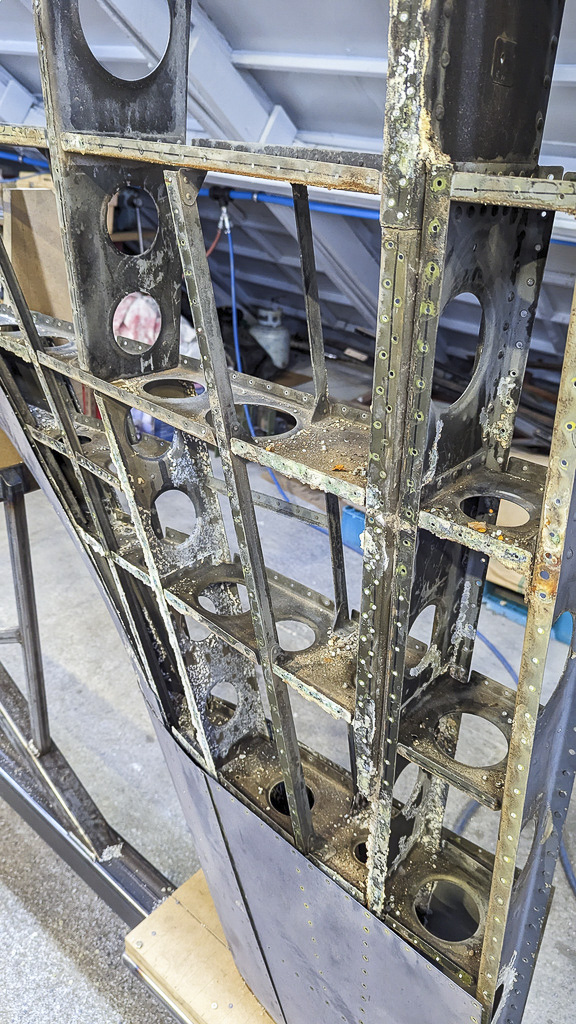
A close up view of the mating point between the forward face of the fin's aft spar and an adjoining rib. Bead blasting and a close inspection of the affected area will confirm whether the corrosion shown here is significant enough to prevent the airworthy restoration of some or all of these components. (photo via Pioneer Aero Ltd.)
Another close up of the forward face of the fin's aft spar. Once all of these components have been disassembled and bead-blasted, the team will assess the viability of their restoration to airworthy condition. (photo via Pioneer Aero Ltd.)
The fin structure following removal of the skins, the aft spar, and Frames 16 and 17. Final disassembly is now under way. (photo via Pioneer Aero Ltd.)
This detailed view of the leading edge for one of the fin's ribs reveals extensive corrosion. This damage is too extensive to permit the part's restoration to airworthy condition, so a replacement component will need manufacturing. (photo via Pioneer Aero Ltd.)
